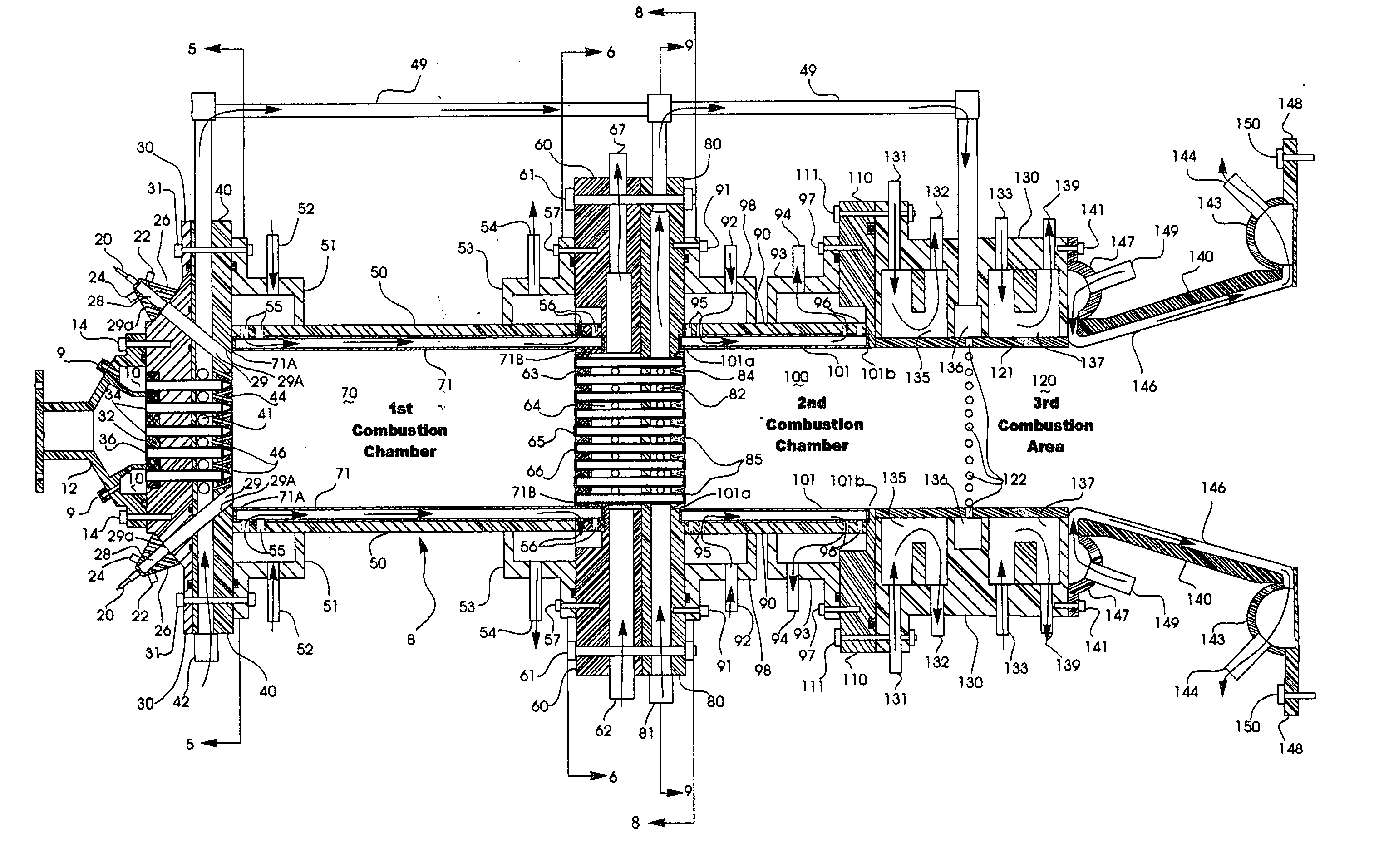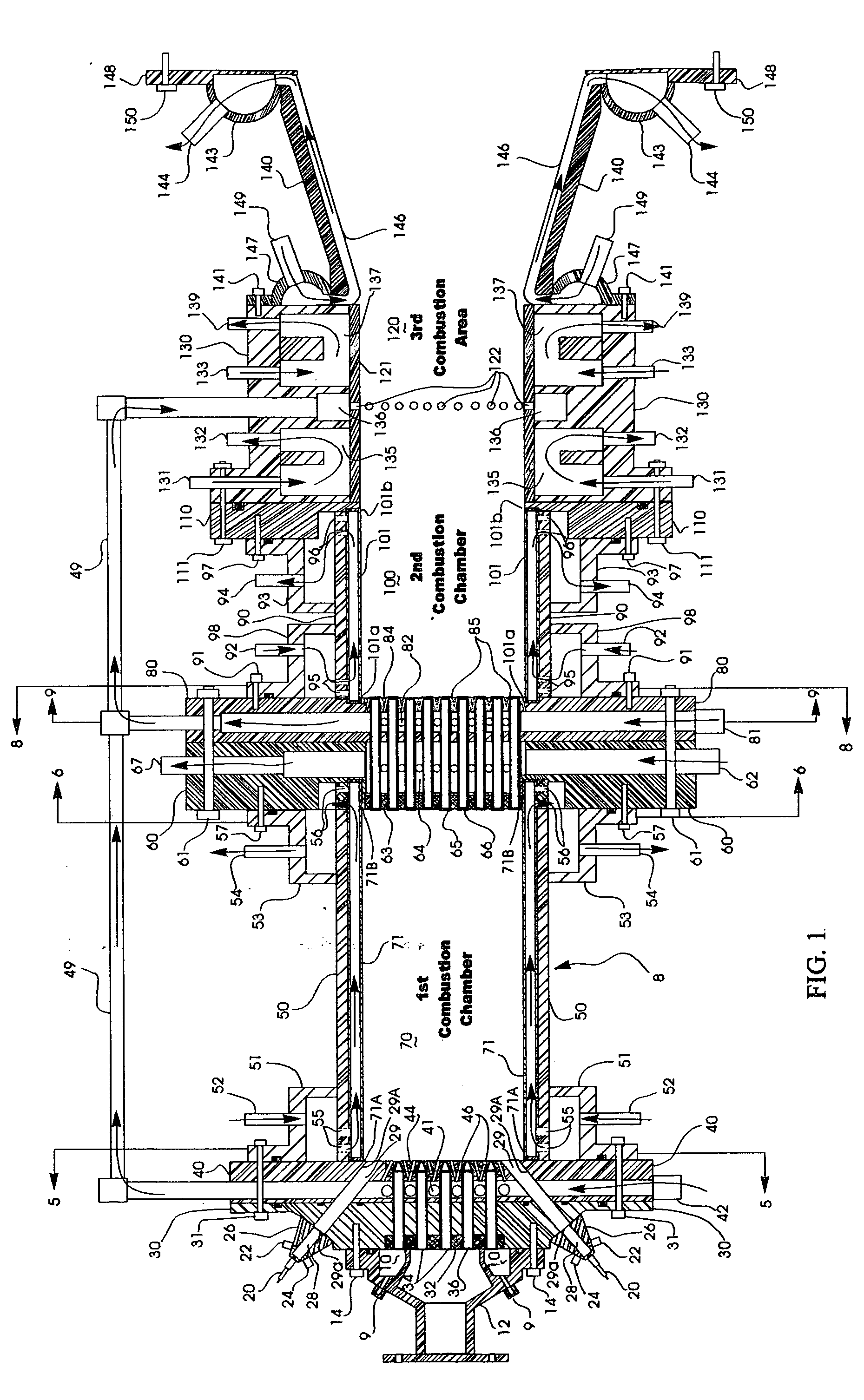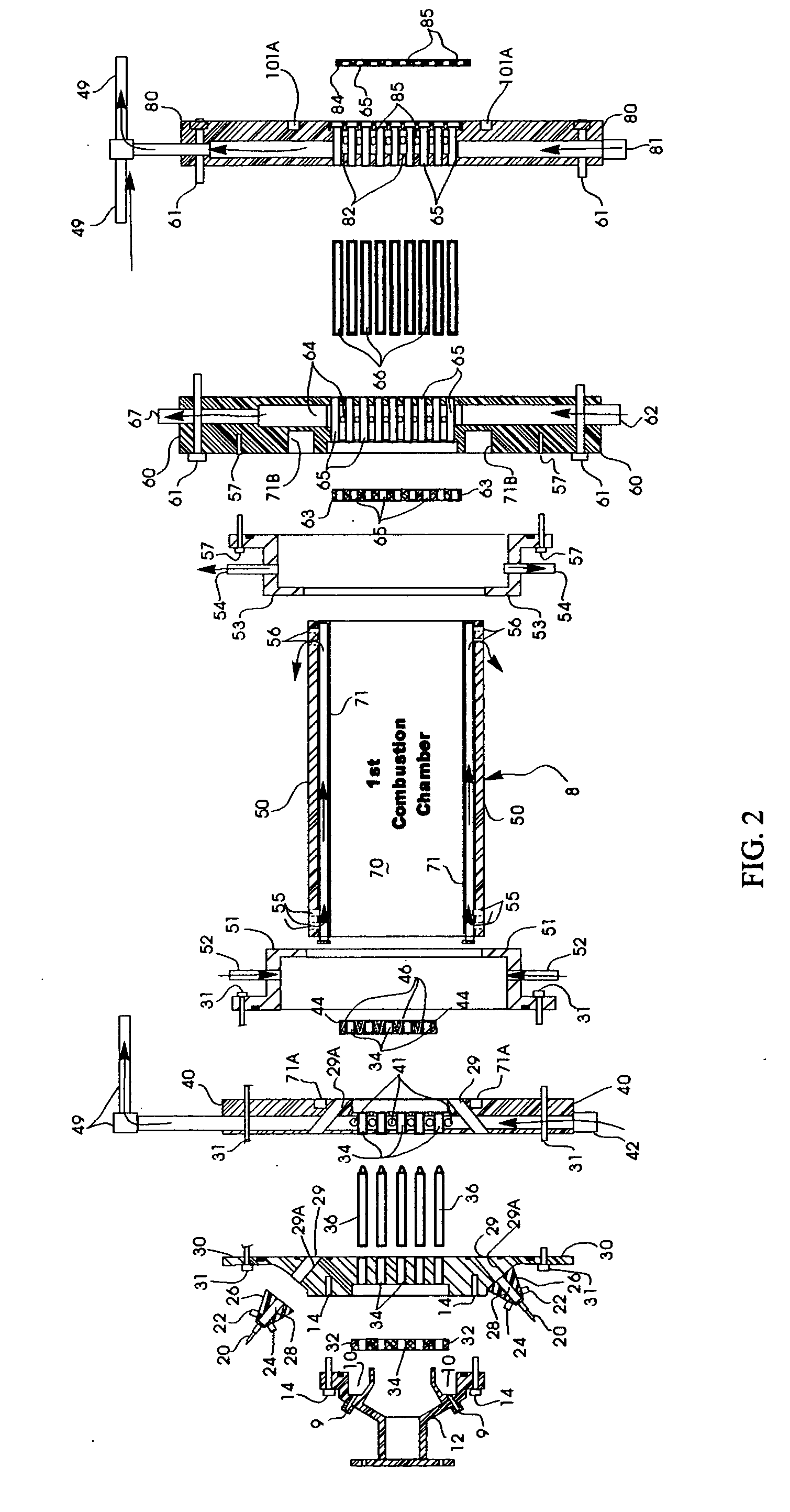Method and apparatus for the production of energy
- Summary
- Abstract
- Description
- Claims
- Application Information
AI Technical Summary
Benefits of technology
Problems solved by technology
Method used
Image
Examples
example 1
Hydrocarbon Combustion Gas Generator
[0739] In this example, a 10-megawatt hydrocarbon combustion gas generator (“generator”) having about a 97% combustion efficiency is constructed of austenitic / ferritic steel generally in the manner shown in the drawings. The generator has an overall length of about 162 inches and an overall outside diameter of about 16.75 inches. It has two combustion chambers and a third combustion area, each of which has an inside diameter of about 13.25 inches and an outside diameter of about 14.75 inches. However, the portion of the third combustion area from which a combustion gas exhaust product exits the generator has different diameters. This part of the third combustion area is cone shaped, with the forward end of the cone having an inside diameter of about 13.25 inches and an outside diameter of about 14.75 inches, and with the aft end of the cone having an inside diameter of about 25 inches and an outside diameter of about 26.50 inches.
[0740] The firs...
example 2
Analysis of Components of Combustion Gas Exhaust Products After Natural Gas, Methanol and Kerosene are Separately Combusted in a 10-Megawatt Hydrocarbon Combustion Gas Generator of the Invention Using Air or LOX as the Oxidizer
[0753] The components, quantities thereof (in terms of number of moles and pounds) and weight percents thereof that are present in the combustion gas exhaust products produced after 2,000 pounds (1 ton) of natural gas, methanol and kerosene (oil #1) are separately combusted in the 10-megawatt hydrocarbon combustion gas generator described in Example 1, using either air or LOX as the oxidizer, with each combustion gas exhaust product exiting the hydrocarbon combustion gas generator at a pressure of about 1,000 psig and at the indicated temperature (which varies at 1,000 psig, depending upon the type of fuel and oxidizer employed), were determined using the thermochemical computer software GUIPEP, and are set forth in the tables below. (In contrast with the app...
example 3
Analysis of Components of Combustion Gas Exhaust Products After Eighteen Different Engineered Fuels are Separately Combusted in a 10-Megawatt Hydrocarbon Combustion Gas Generator of the Invention
[0760] The components, quantities thereof (in terms of number of moles and pounds) and weight percents thereof that are present in the combustion gas exhaust products produced after 2,000 pounds (1 ton) of the eighteen Engineered Fuels described below are separately combusted in the 10-megawatt hydrocarbon combustion gas generator described in Example 1, using LOX as the oxidizer, with each combustion gas exhaust product exiting the hydrocarbon combustion gas generator at a pressure of about 600 psig and at the indicated temperature (which varies at 600 psig, depending upon the type of fuel employed), were determined using the thermochemical computer software GUIPEP, and are set forth in the tables below.
A. EF-1 Fuel (Exhaust Temperature of 2787° F.)Moles Present inPounds PresentCombustio...
PUM
 Login to View More
Login to View More Abstract
Description
Claims
Application Information
 Login to View More
Login to View More - R&D
- Intellectual Property
- Life Sciences
- Materials
- Tech Scout
- Unparalleled Data Quality
- Higher Quality Content
- 60% Fewer Hallucinations
Browse by: Latest US Patents, China's latest patents, Technical Efficacy Thesaurus, Application Domain, Technology Topic, Popular Technical Reports.
© 2025 PatSnap. All rights reserved.Legal|Privacy policy|Modern Slavery Act Transparency Statement|Sitemap|About US| Contact US: help@patsnap.com



